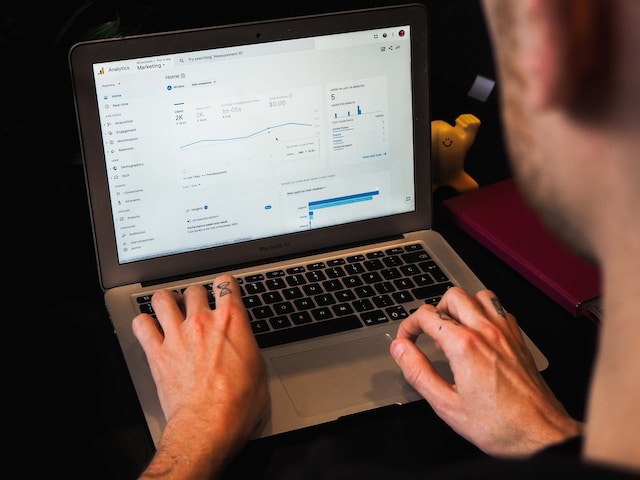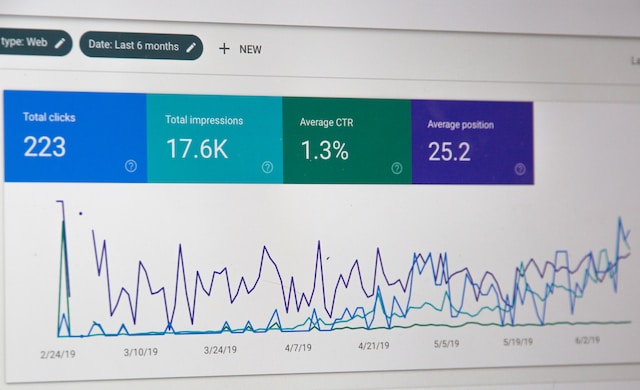Drive Your Website’s Growth with Google Analytics

Welcome, dear readers! Ever wondered how your website is performing? Curious about who visits your site, where they’re coming from, and what pages they frequent the most? Enter Google Analytics. This remarkable tool provides a comprehensive overview of your website’s activities and user behaviors. It’s like a stethoscope for your site’s heartbeat that not only listens but also diagnoses unwell areas requiring your attention.
So, what is this fantastic tool all about? Well, Google Analytics is a free web analytics service introduced by Google that tracks and reports website traffic. It grants invaluable insights into who your digital audience is, how your website is performing, and even what changes you can make to improve visitor experiences. Imagine having a powerful microscope enabling you to dive deep into the complex tapestry of your website’s operations; that’s Google Analytics for you.
Now, you might be thinking, “That sounds great, but how is this information going to benefit me?” Good question! This is where the rubber meets the road.
By understanding your visitor behavior – where they’re coming from, their age, gender, and interests – you can tailor your website content to meet their needs effectively, in turn dramatically improving your site’s user experience and boosting conversions.
Let’s put it simply. Google Analytics is not just a tool; it’s your website’s best friend, acting as a GPS helping you navigate the often convoluted digital landscape. So, are you ready to unlock its power and level up your website game? Stay tuned as we delve deeper into the features and benefits of Google Analytics.
Table of Contents
What is Google Analytics and why is it important?
Ever wondered what’s happening behind the scenes on your website? What content is resonating with your audience? Where are your visitors coming from, and what is encouraging them to convert? This, my friends, is where Google Analytics enters the scene.
Google Analytics, for those who are not familiar with it, is a free, power-packed web analytics service provided by Google. It tracks and reports crucial website data. This humble, yet mighty tool is your window to understanding your online visitor’s behaviour, preferences, and interactions. It trades the mystery of “who’s doing what” on your site for solid facts and figures.
Why is Google Analytics so important, you may ask? Good question! See, knowledge is power. And in the vast, competitive world of the digital market, knowing your audience is the key to success. Google Analytics shines a light on your users’ activity: their demographics, behaviours, interests, engagement time, and much more. It’s like having a crystal ball that unveils the pulse of your website.
But, it doesn’t stop there! Google Analytics goes a step further. It not only informs you about your traffic’s behaviour but about where this traffic is coming from as well.
Are they directed by social media, search engines, or other websites? Imagine the power of knowing which platform is driving the most traffic to your site. How about identifying the most effective keywords in driving organic traffic? Or discovering what time of the day your site is most visited? All these insights are within your reach, thanks to Google Analytics.
And, let’s not forget about conversions! Google Analytics helps track your marketing campaign goals, whether it’s sign-ups for your newsletter, product purchases, or any other key metrics of success. This toolbox allows you to monitor and assess the performance of your website in real-time, empowering you to make data-backed decisions.
So, we’ve established Google Analytics is important. Heck, I’d say it’s essential! But you might be thinking, “This sounds complicated, can I really navigate this thing?” You bet you can, and we’re here to help you do just that.

Getting started with Google Analytics
So, you’ve heard about Google Analytics and how imperative it can be for your website, but how exactly do you get started? It might seem daunting at first, but don’t worry! You’re about to embark on an exciting journey into the world of digital analytics, and we’re here to guide you every step of the way.
First things first, you’ll need a Google Account. Already have one? Great! If not, it’s a pretty simple process to go through. Just navigate to the Google home page and click on ‘Sign in’ at the top right corner. Follow the prompts and voila – you’re part of the Google family!
Once your Google Account is up and running, your next step is to set up your Google Analytics account. Head over to the Google Analytics website and click on ‘Start for free’. What’s that? A bit overwhelmed by all these new terminologies like ‘Property’, ‘View’ and ‘Account’? Relax, we’ll break it down for you:
- Account: This could be your business’s name. You can have up to 100 Google Analytics accounts under one Google Account.
- Property: This is your website or app. You can have up to 50 properties under one Google Analytics Account.
- View: This is where you can access your reports. You can set up multiple views under one property to segment your data.
After setting up your account, property, and views, it’s time to install your Google Analytics tracking code on your website. Where’s this code, you ask? This can be found under your property’s ‘Tracking Info’ tab. This unique bit of JavaScript needs to be implemented on every page you want to track. Fear not, this isn’t as complicated as it may sound; most website platforms have a designated area for adding this.
Okay, now that your tracking is ready to go, what’s next? You might be asking yourself – “Do I start to see the magic happen right away?” Well, not quite. It takes about 24 hours for data to appear in your reports – a little patience goes a long way!
So, are you ready to fully immerse yourself in the world of Google Analytics and make data-driven decisions for your website? We’ve started the engine, now it’s your turn to step on the accelerator!
Key features of Google Analytics
At this point, you’re probably wondering, “What makes Google Analytics so special?” Well, its power lies in the multitude of key features it offers, designed to provide you with detailed, actionable data about your website users. Let’s dive a little deeper into some of these features.
Real-Time Reporting
One of the standout features of Google Analytics is Real-Time Reporting. This tool gives you insight into what’s happening on your website at this very moment. Are visitors flocking to a particular blog post? Are they lingering on the product pages? With real-time reports, we can respond swiftly to user behavior and make crucial adjustments to our site as needed. Now, isn’t that handy?
Traffic Sources
Ever wondered where your website visitors are coming from? Google Analytics is here to answer that with its Traffic Sources feature. It breaks down the sources of your web traffic into categories like organic search (Google, Bing), paid search (Google Ads), direct (typed URL), referrals (from other websites), and social (Facebook, Twitter, Instagram). Isn’t it fascinating to know exactly which routes bring people to your website?
Audience Demographics
Getting to know your audience is key to delivering effective content and targeted marketing. Google Analytics hits the bullseye with the Audience Demographics feature. This tool gives you an overview of your audiences’ demographics such as age, gender, and interests. Understanding who your visitors are can help us tailor strategies that resonate most with them. Picture adjusting your website’s color scheme to better fit your audience’s preferences, or tweaking your language style to align closer to their vocabulary? That’s the power of audience demographics.
Goals and Conversions
If understanding user behavior forms one side of the Google Analytics coin, measuring website performance is the other. This is where the Goals and Conversions feature comes in. Goals are the measures of your website success; they could range from a product purchase, form submission to newsletter sign-up. Conversions are the number of times the goals are achieved. Tracking these can help gauge the success of our efforts and identify what’s working and what’s not for your website. Are we meeting our goals, or is it time for a tactical review?
To sum it up, Google Analytics is much more than just a tool. It’s a cohesive suite of features working together to empower you to make informed decisions about your website. With it at your disposal, you’re just a few clicks away from transforming your website data into actionable insights. Are you ready to unlock the power of Google Analytics?







